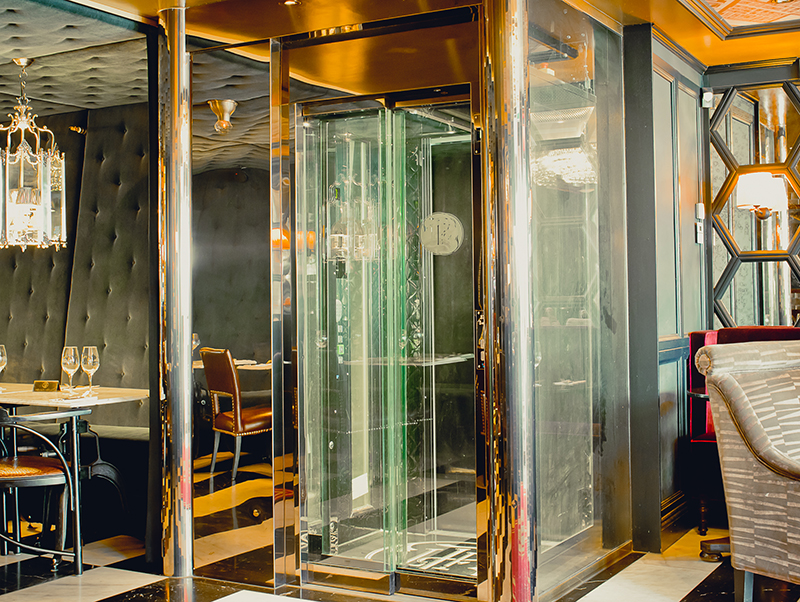The comeback of the hydraulic lift
The hydraulic lift is an excellent choice for residential buildings - although they only represent some 24% of the market for residential applications.
A study, by the Spanish ITAINNOVA, the Technological Institute of Aragon rehabilitates the hydraulic lift for the vast majority of lift applications on the market.
The residential market across the globe represents more than 52% of the total market, and in these applications, most buildings are not higher than 10 floors. In Europe, it is more, with 74% of the building stock being lowrise (lower than 7 floors) and residential.
The hydraulic lift lost its preeminence
The residential market was the domain of the hydraulic lift in Europe as well as North America, up to 7 floors, until the end of the XXth century. It remains so in the USA, but in Europe the trend has been different. At the turn of the century, the hydraulic lift had lost its preeminence.
It was perceived as consuming too much energy and being therefore bad for the environment. In Europe now, hydraulic lifts only represent some 24% of the market for residential applications, for 73% geared traction lifts and 3% gearless traction lifts.
But the ITA study, based on LCA (Life Cycle Analysis) of both hydraulic and traction lifts, has come to a totally different conclusion: Life Cycle Assessments of both traction and hydraulic lifts in the different usage categories show a clear environmental advantage to hydraulic lifts, over their whole life cycle, for low building, with a traffic up to 300 trips/day. This is a surprising result for many professionals in the lift industry.
Better for the environment
For low use applications in low buildings (up to 7 floors) of category 1 and 2 (respectively less than 50 and 150 trips/day) but also for lift category 3 (lifts travelling 300 trips/day), the hydraulic lift comes ahead during the first 16 years and over the lifetime of a lift (20 years+), both traction and hydraulic in category 3 can be considered as having the same environmental impact.
For these buildings and categories 1 & 2 (50 and 150 trips/day), the hydraulic lift is better for the environment, despite its surge in energy consumption when functioning. For category 3 (300 trips/day) both types of lifts are about equivalent during their first 20 years; the traction lift only "catches up" after 16 years.
Lighter environmental impact
The reasons are simple: hydraulic lifts contain less materials, and at eve¬ry stage of the life cycle, they get better LCA results than traction lifts, except when functioning. Even in the standby phase (the largest part of a lift electricity consumption, by far), even in maintenance, since hydraulic lifts are simpler and their maintenance is easier.
Hydraulic lifts are clearly the ideal solution for low buildings, up to 7 stops with low or average traffic, which represent a minimum of 70% of buildings in Europe, because of their lighter environmental impact.
For the Life Cycle Analysis, the experts produced a real photography of the lift environmental impact by taking into account:
– Materials extraction & processing
– Manufacturing (components manufacturing & assembly)
– Transport and distribution
– Installation
– Use (where energy efficiency is taken into account)
– Maintenance
– Dismantling and recycling (end-of-life)
The result of the ITA study could very well mean a "return of the hydraulic lift" in the years to come, throughout Europe. It is not normal that hydraulic lifts only represent a mere 24% of the residential segment of the market…
New controllers are much more efficient
Clearly, the Traction lift have an advantage in energy consumption during the Usage phase. This is actually limited to the movements of the car. The largest part of electricity consumption of a lift is during the standby phase, when it waits for passengers.
All lifts need to have "sleep modes" that "wake them up" when a passenger presses the button. New controllers are much more efficient now at reducing standby consumption of both hydraulic & traction lifts.
Hydraulic lifts have less impact in the initial phases (materials, transport), always resulting in a product with a better (lower) environmental profile in a "cradle to grave" approach, without including the service period. They have also a better profile for all categories where the use is not very intense, resulting in a better global option for Usage categories 1, 2 and partly 3. That means for up to 300 daily trips.
Higher impact in the initial phases
Traction lifts have a higher impact in the initial phases and a worse profile in the service phases (energy consumption) for Usage categories 1, 2 and partly 3 (roughly during the 16 first years). For more intense usages, the lower energy consumption during service, tends to compensate for the initial higher impact, resulting in a better general environmental profile for installations with heavy traffic.
The industry should realize now that the environmental debate was wrongly focused on electricity consumption during use. The market should be a level playing field. Let’s also not forget that the lift & escalator industry - like most industrial sectors - managed to drastically reduce its energy consumption over 40 years, roughly by two thirds.
www.elca-eu.org


























Write a comment